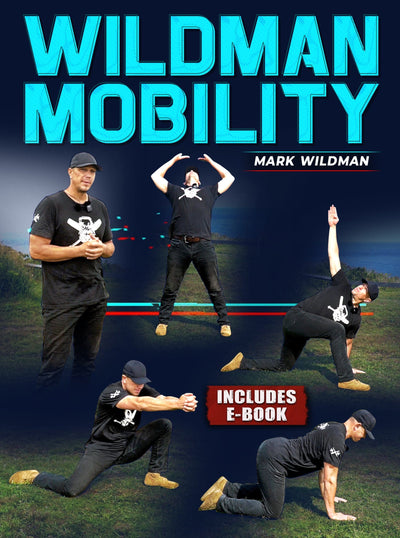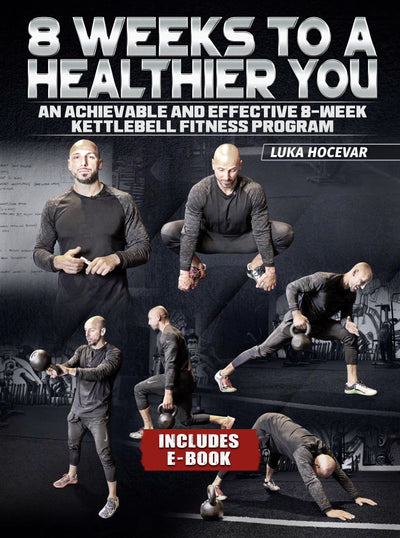Kettlebell Swing Push or Pull
The kettlebell swing is a dynamic and highly effective exercise that engages multiple muscle groups, providing both cardiovascular and strength benefits. It involves a hip-hinge movement pattern where the kettlebell is swung between the legs and then thrust forward using the hips and core muscles. While the traditional kettlebell swing is primarily a push movement, variations of the exercise can incorporate both pushing and pulling elements to target different muscle groups and achieve specific fitness goals. So is the kettlebell swing a push or pull?
What this article covers:
In its classic form, the kettlebell swing is a pushing movement. As you swing the kettlebell forward, you engage the muscles of the hips, glutes, and hamstrings to generate the force needed to propel the kettlebell forward. The rapid hip extension is what drives the kettlebell's movement and gives the exercise its distinct power. This explosive push engages the posterior chain and helps improve hip strength, explosiveness, and overall athletic performance. Moreover, the core muscles play a crucial role in stabilizing the spine throughout the movement, making it an excellent exercise for developing core strength and stability.
While the traditional kettlebell swing is predominantly a push exercise, certain variations incorporate pulling elements to provide a more comprehensive workout. One such variation is the "kettlebell swing pull," where, instead of allowing the kettlebell to swing freely, you actively pull it upward using your arms, shoulders, and upper back muscles during the upward phase of the movement. This pulling motion not only adds an upper body component to the exercise but also engages the muscles of the shoulders, lats, and upper back, enhancing overall upper body strength and muscular balance.
The kettlebell swing push-pull combination can be seamlessly integrated into a full-body workout routine. By alternating between traditional swings and swing pulls, you create a well-rounded training session that targets both the lower and upper body muscles. This combination can be particularly beneficial for individuals seeking to enhance their functional strength, improve muscular endurance, and promote balanced muscle development.
It's important to note that proper technique is paramount when performing kettlebell swings, regardless of whether they involve a push, pull, or a combination of both. Engaging the correct muscle groups and maintaining a strong, stable core is essential for preventing injuries and maximizing the exercise's benefits. If you're new to kettlebell training, it's advisable to seek guidance from a certified fitness professional to ensure you're performing the movements safely and effectively.
Kettlebell High Pull
In addition to the classic kettlebell swing and its variations, there are several other kettlebell pull exercises that offer unique benefits to your workout routine. The kettlebell high pull is an explosive movement that combines elements of both pulling and hip extension. During a kettlebell high pull, you initiate the movement with a hip hinge and then, using the power generated from your hips, pull the kettlebell upward to chest level, engaging the muscles of your upper back, shoulders, and arms. This exercise is one of many kettlebell pull exercises.
Kettlebell Pullover
Another effective pull exercise involving a kettlebell is the kettlebell pullover. In this movement, you lie on your back while holding a kettlebell with both hands and extend your arms backward, lowering the kettlebell behind your head, and then pull it back up using the muscles of your chest, back, and shoulders. The kettlebell pullover targets the stabilizing muscles of the core, as well as the lats and chest, providing a unique challenge to both the upper body and core muscles.
Kettlebell Pull-Throughs
Kettlebell pull-throughs and kettlebell swings, are exceptional for targeting the glutes, hamstrings, and lower back muscles. In a pull-through, you position a kettlebell between your legs while in a wide stance, and then, using a hip hinge motion, you pull the kettlebell through your legs to the front, engaging the posterior chain in a pulling motion. This movement enhances hip mobility and strengthens the muscles responsible for powerful hip extension.
Kettlebell Plank Pull-Through
For a blend of pulling and core engagement, the kettlebell plank pull-through is a demanding exercise. This movement involves starting in a plank position with a kettlebell placed at one side of your body. You then reach across with the opposite hand to pull the kettlebell underneath you and place it on the other side. This exercise engages your core muscles to maintain stability and balance, while also activating the muscles of the shoulders and arms during the pulling action.
Incorporating these various kettlebell pull exercises into your training routine can provide a well-rounded approach to developing strength, power, and muscular balance. As with any exercise, proper form and technique are crucial to ensure safety and maximize results. If you're new to kettlebell training or unfamiliar with these movements, consider seeking guidance from a qualified fitness professional to learn the correct execution and gradually progress as your strength and skill improve.
In conclusion, the kettlebell swing is a versatile exercise that can be adapted to incorporate both pushing and pulling elements, targeting various muscle groups and providing a well-rounded workout. Whether you choose to focus on the explosive hip-driven push or integrate a pulling motion to engage the upper body, the kettlebell swing remains a valuable addition to any fitness regimen. Always prioritize proper form and technique to reap the full rewards of this dynamic exercise.
Did you find the blog helpful? If so, consider checking out other guides:
- Kettlebell High Pull Muscles Worked
- Kettlebell Jump Squats
- Hack Squat Kettlebell
- Kettlebell Squat Variations
- The Kettlebell Rack Squat
- Kettlebell Split Squat
- Overhead Squat with Kettlebells
- Double Kettlebell Squat
- Pistol Squat on Kettlebell
- Kettlebell Squat Clean
- Kettlebell Squats Muscles Worked
- Kettlebell Bulgarian Split Squat
- Bent Press Kettlebell
- Half Kneeling Kettlebell Press
- Kettlebell Military Press




